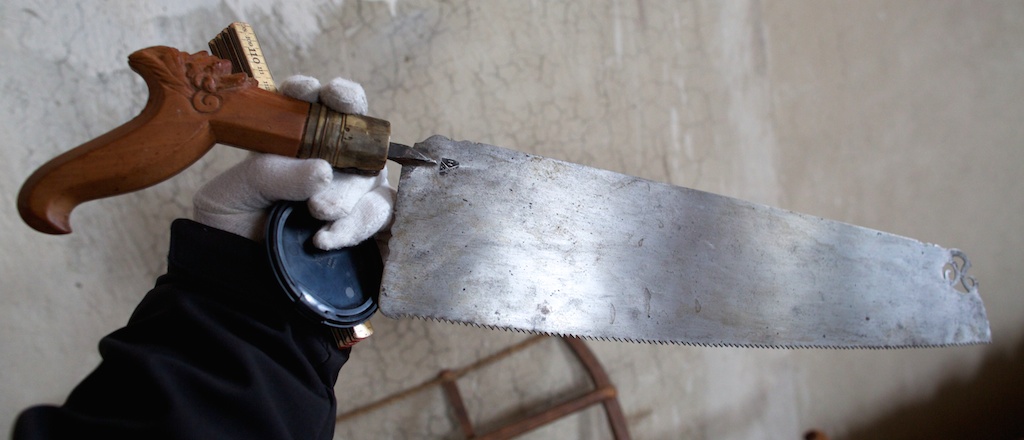Sorry to be a bit late to this fascinating discussion. Here's my attempt to add to the thinking so far.
The answer to the question 'why is there sometimes a nib on a saw' could be most satisfactorily answered if we could go back in time and ask the first sawmaker who added a nib why he had done so, or if we could find a written statement by him explaining his idea. We can't do that of course.
Nibs on saws, both plain and fancy, go back quite a long way.
These pictures are from "The Story of the Saw" published by Spear and Jackson and show 18th century Swedish and Dutch saws. Note that the second picture shows a plain nib and a more elaborate feature.
This picture is of a similar seventeenth century saw as Skokokstlers Castle in Sweden
(From the excellent Hovelbenk blog at
https://hyvelbenk.wordpress.com/2014/03/21/verktoy-pa-skokloster-slott/ .)
So we can see very early examples of some extra bit of work being done towards the toe of a saw, from about as far back as we can go in the history of western-style push-cutting saws.
Turning to the purpose, I'd heard the suggestion mentioned by Matt on page 1 that the nib was for starting a cut, and had always dismissed it as nonsense, so it was interesting to see a video of a carpenter making use of it in what looked like quick, efficient work.
Looking at the saws that I own, I only have one with a nib, and it's on a rip saw with very big teeth, so although it's possible that my saw's teeth have been recut, I can't see a need for a kerf-starting nib on a rip saw. There are some good early examples of rip saws with nibs of course - the Kenyon saws in the Seaton Chest.
In the book about the chest, the chapter on saws was written by the late Ken Hawley and updated by Simon Barley - two men with more knowledge of saws than anyone else. Ken expressed his view that the nib was a decorative feature to balance the decorative handle, not a functional one. He provided examples of other common tools which almost always have a little touch of decoration on them just to finish them off properly, such as dividers with file work and engraved circles.
Paddy Roxburgh remembered
my post about Shane Skelton talking to Richard Maguire about the nib on his copy of one of the Kenyon saws in the Seaton Chest, at Richard Arnold's charity do. (This was in our long discussion about saw tensioning, not in the chat about the event.)
Now, Shane knows a thing or two about saws, and he did indeed express his conviction that a nib like the one on his saw is useful for seeing when to stop pulling back on a saw. He said it was especially valuable in a pre-industrial hand tool workshop when the craftsman would be swapping from one saw to another. Jimi captured the good-humoured discussion on video and you can see it here on his YouTube channel. (The whole video is worth watching, but this link should take you to the nib discussion:
https://youtu.be/8NImt7g5iOQ?t=8m36s )
So, my contribution to the collective wisdom is to suggest that some saws have impractical decoration near or at the end and other saws have a minimally decorative feature which sometimes can be put to practical use. I hope we can all agree on that.






































